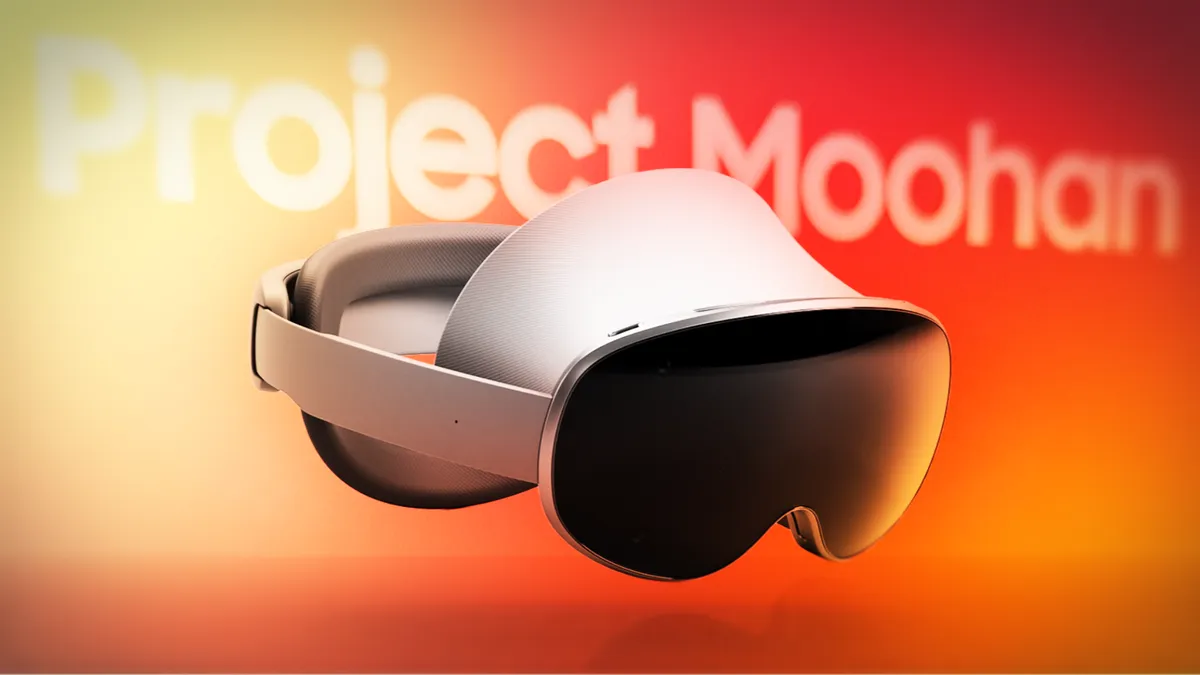
While Meta’s Quest line of headsets has dominated the virtual reality space, mixed reality — using digital displays overlaying the real world — is a new frontier that’s just starting to be explored, going beyond the new Meta Ray-Ban Gen 2 to devices more akin to the Ray-Ban Display glasses. That’s where Google’s Project Moohan MR display aims to make headway. Unlike its prior efforts in the space, like Google Glass, the company hopes to gain an edge by partnering with Qualcomm and Samsung to bolster its chances.
At the Snapdragon Summit 2025 in Maui, I sat down to chat with Sameer Samat, Google’s head of Android, and Alex Katouzian, Qualcomm group general manager of mobile, compute and XR, to check in on Project Moohan and how the broadening of Android and Gemini coalesces with their collaboratively built headset. Which, despite CNET Editor at Large Scott Stein getting hands-on time with an early version of it last December, is still in development.
“We’re super excited about the device coming along really nicely,” Samat said. “We’re definitely getting closer.”
It was clear to Snapdragon Summit attendees that Project Moohan is still in development. The headset was quietly tucked into an easily missed corner of the event, shown off for only a couple of hours under glass and out of anyone’s hands. But Samat was bullish about the progress made in the last year, which has “subtle but very important refinements to the hardware,” he said.
Read more: You Got Your Phone OS in My Laptop! Here’s How Android and ChromeOS Will Merge
Design-wise, Samat explicitly pointed to improvements in the weight balance, ensuring the ergonomics are correct and that the light ingress is where it should be. Where the weight is balanced is crucial in the design of smart glasses that are expected to be worn for hours at a time. When the Apple Vision Pro launched in early 2024, CNET’s Stein noted that the headset felt top-heavy after only half an hour when using the standard single strap. However, using the dual strap was more comfortable, but, in his words, “Looks like the headband on my CPAP machine.” In summary: “A bunch of changes there that I don’t think you see when you look at it, but when you put it on from before and after, I think people would very much notice,” he said.
“I saw early prototypes until now, big difference,” added Katouzian. “I think the weight and the balance is really good and mechanically very well designed.”
Project Moohan uses Qualcomm’s XR2 mixed reality chip. The company worked with Google and Samsung to optimize everything, Katouzian said.
The software has come a long way, Samat continued, and he was quick to affirm that there’s been a lot of refinement in incorporating Gemini into the headset. That loops Project Moohan into the drum Qualcomm and Google were beating throughout Snapdragon Summit 2025: the Gemini experience that uses multiple large language models to answer queries will be an increasingly significant part of using devices, from phones to laptops to headsets, going forward.
“What would happen if, in the user experience, your AI assistant can see and hear what you’re hearing … if they could see the same virtual world as you at the same time, and you could ask them to walk through and explore that world with you?” Samat said. “I’m playing around a lot with that. Even to explore places, like you go somewhere in [Google] Maps and then you walk around and ask questions of Gemini and just explore an entire city with it.”
Bringing contextual information to the screen while going about your day was the dream of older experiments, such as the Google Glass mixed reality glasses released in 2013 and the 2016 Google Daydream, which turned your phone into an augmented reality headset. Samat obliquely referenced these, saying the company has “had our fair share of innovation and being first, but also some things that could have worked better.”
But Samat also pointed to what’s changed in the interim — one of which is computational power from chips like the Qualcomm XR2 that powers Project Moohan. This silicon “opens up another level of fidelity,” he said, pointing to other technical advancements, like optics in the hardware for eye tracking. And AI in general has improved too, with non-Gemini applications that can, for instance, augment Google Photos with uniquely enabled AI experiences in the XR world — experiences that “you’ll see soon enough,” Samat teased.
The companies believe combining Google’s software, Qualcomm’s silicon computational horsepower and Samsung’s ergonomic product design will create something special that fits the mixed reality format better than anything we’ve seen before.
In addition to Project Moohan, Google is exploring a whole range of ideas, including smart glasses. At some point, they’ll take what was developed for its mixed reality headset and shrink it down to something that would more directly compete with Meta’s Ray-Ban Display and others like it. And with Samsung in the mix, there’s a lot of potential.
“The close proximity between the glasses and the phone will bring an advantage that hasn’t been in the market before,” Katouzian said.
Read more: Smart Glasses Are Going to Work This Time, Google’s Android President Tells CNET
If and when a smart glasses collaboration happens, Google has another advantage that might be more appealing than Gemini integration: individual style. Not everyone wants smart glasses from Ray-Ban or Oakley. Google has previously announced that it’s working with Warby Parker and Gentle Monster to presumably put a Project Moohan successor in a variety of frames, which could entice consumers who aren’t fans of wrap-around sports shades.
“The aesthetic of it is super important,” Samat said. “Yes, of course, it’s a piece of technology, but it also has to be something you want to wear.”



